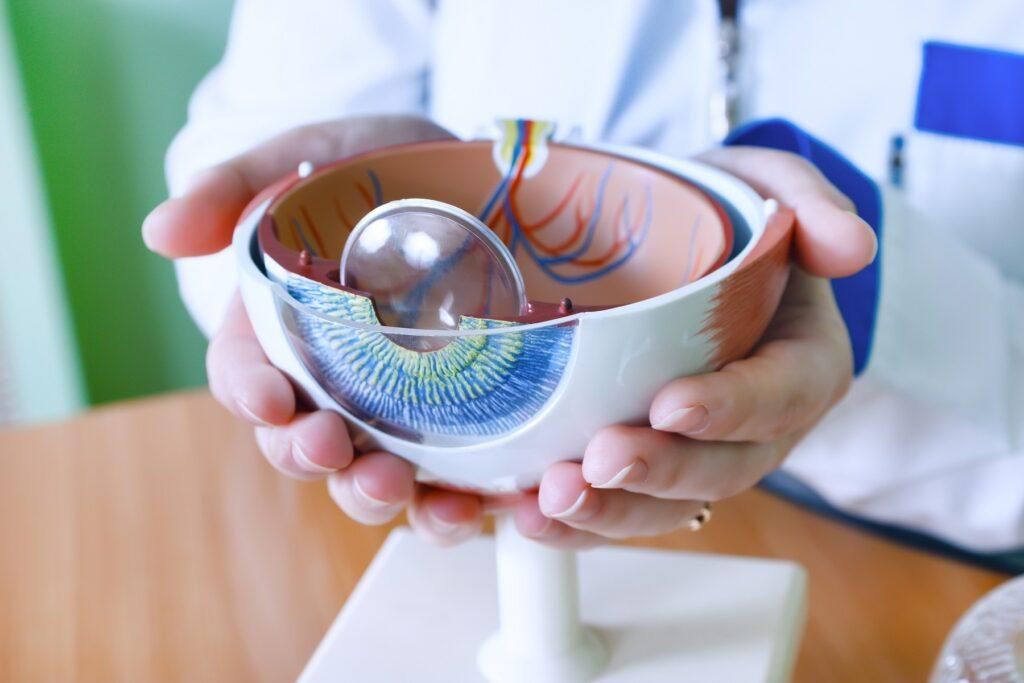What Does Refractive Surgery Correct?
Sub Title

Laser refractive eye surgery refers to a wide range of corrective vision surgeries used to help address various vision problems. Some of the more common laser surgeries used today include:
- PRK (Photorefractive Keratectomy)
- LASIK
- Cataract Surgery
- ReLEx® SMILE (Small Incision Lenticule Extraction)
- Visian ICL
- Visian Toric ICL
- RLE
Each refractive surgery uses lasers to assist, but the processes used vary. Some procedures will help correct vision using the laser to reshape the cornea. Other procedures can have a small implantable contact lens that is inserted into the eye.
Types of Different Vision Problems Corrected with Laser Surgery
To determine which type of laser refractive eye surgery could be ideal for correcting your vision problems, you first need to understand various types of vision issues people face. When a person has a healthy eye, their vision is 20/20 or better. They can see things clearly up close and far away and do not need glasses or contacts.
When a person has hyperopia or farsightedness, they have problems seeing things up close. They need glasses to read a book, make out small wording on packages, view text messages on their smartphone, and so on. Hyperopia occurs when the cornea is too level. Corrective refractive surgery reshapes the cornea so it is steeper.
When a person has myopia or nearsightedness, they have difficulties seeing clearly at a distance. Myopia occurs when the cornea is too steep. Laser eye surgery helps reshape the cornea by decreasing the steepness of the curvature.
When a person has astigmatism, the cornea has irregular curving that makes it difficult to keep objects in focus. Refractive eye surgery helps to reshape the cornea and make the curving or regular to sharpen vision.
When a person has cataracts, the lens in the eye starts to cloud and block light, resulting in a decrease in vision. The purpose of cataract and refractive surgery is to remove the cataract and help restore vision.
When a person has presbyopia, they start to develop problems seeing things up close. The vision becomes blurred and is no longer clear. This is an age-related condition that starts in the 40s and continues to progress as we get older. Presbyopia is caused when the lens starts to stiffen, which causes less flexibility, which is needed to focus. Refractive surgery helps return flexibility to the lens.
Which Laser Refractive Eye Surgery Is Best?
Determining which laser refractive eye surgery is best depends on your current vision problems. Your age, health, and overall medical prognosis will also determine which types of refractive eye surgeries could help.
For example, if you are over the age of 40 and are nearsighted or farsighted or have astigmatism or presbyopia, one eye surgery option is Refractive Lens Exchange (RLE). This vision correction surgery uses a multifocal implant that is placed into the eye.
On the other hand, if you have cataracts, an Intraocular Lens (IOL) is inserted after the cloudy part of the lens has been removed using a laser. There are several different types of IOLs, depending on your vision issues.

In cases where you do not need an IOL or another lens implant, then PRK, LASIK, or SMILE refractive eye surgeries could be better to address your vision problems. If you have glaucoma and it is affecting your vision, there are various laser eye surgeries, as well, to help improve your vision.
To find out what types of refractive surgery would be best for you, please feel free to call Dougherty Laser Vision at (805) 793-1647 today!
We have five office locations in Westlake Village, Camarillo, Beverly Hills, Simi Valley, and Encino, CA. We also accept patients from all over the United States and internationally too!

